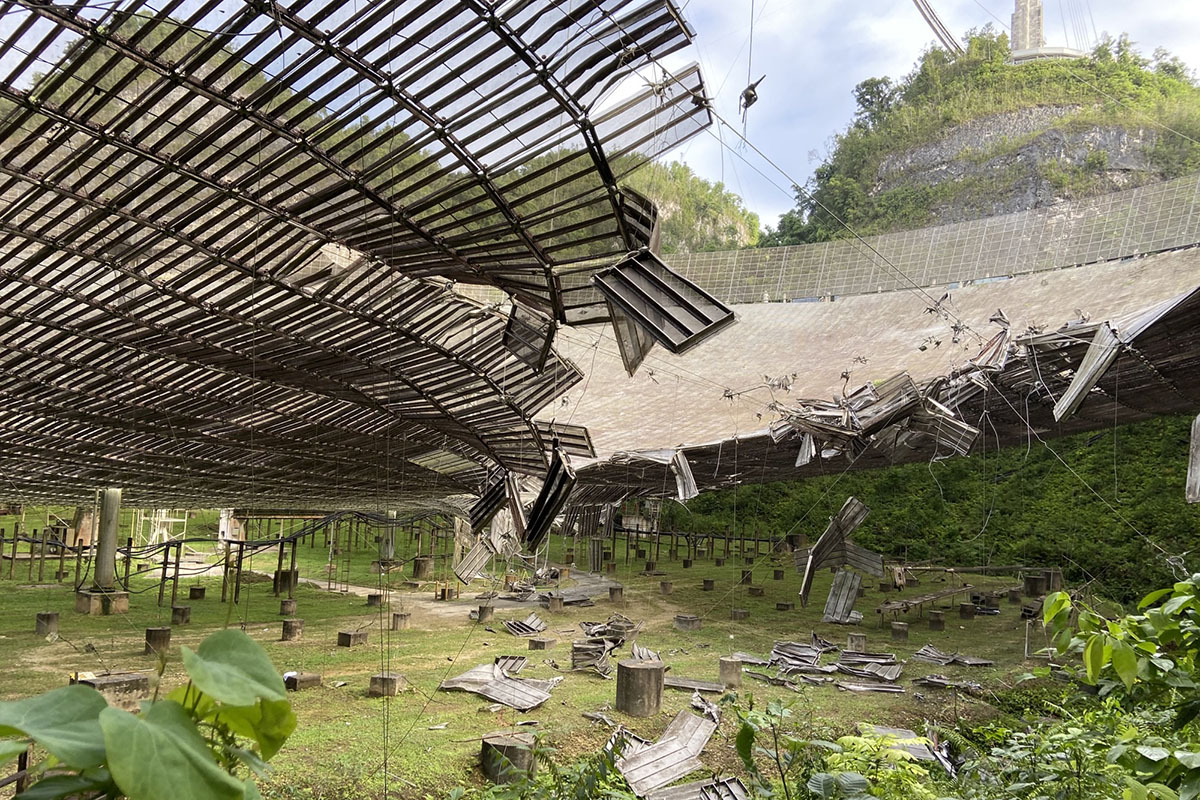On Aug. 10th, a little over a month ago, the iconic Arecibo Observatory suffered serious damage when an auxiliary cable broke and struck the reflector dish. This cable struck the observatory’s Gregorian Dome on its way down and twisted an access platform before landing on the reflecting dish itself. The impact created a gash over 30 meters (100 feet) in length and forced the observatory to shut down until repairs could be made.
Since then, teams have been busy working to stabilize the structure and determine the cause. These teams are made up of technicians from the observatory and the University of Central Florida (UCF), which manages the facility for the National Science Foundation (NSF). For the past few weeks, they have been meeting with experts from various fields and laying the groundwork for an investigation and a rigorous repair schedule.
Continue reading “An Update on the Damage to the Arecibo Observatory”

